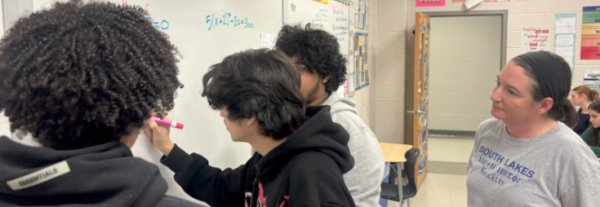First Thanksgiving: from fake fantasy to violent history
The head of Metacomet of Wampanoag tribe, also known as King Philip, was mounted on a pike by colonists and left in front of Fort Plymouth for over 20 years. His body was cut up into pieces and hung from trees.
Thus the relationship between the Wampanoag and the Pilgrims was, without a doubt, broken.
It was this fact, this violence, between the two groups that surprised senior Kaitlyn Prisciandaro about the story of the first Thanksgiving.
“I remember there was a big emphasis on historiography. It’s not actually like, Happy Thanksgiving,” Prisciandaro said. “I just think it’s sad that we’ve been taught this whole fake narrative. I think their biggest point was not what they were teaching but that we’ve been learning it wrong our whole life.”
IB History of Americas provides students with a more in depth version of the first Thanksgiving and the events surrounding it.
“In HOA we learned that the colonists treated the natives really, really poorly,” junior Sohum Sontakke said. “They ended up killing a lot of them. In elementary school you learn that they have a big meal and get along peacefully. You don’t really learn about the violence between the colonists and the Indians.”
As children, students only learn a version of the peaceful time between the Wampanoag and the Pilgrims.
“I think that people are taught the easy mythology,” history teacher Jim Wagner said. “That doesn’t take away from the fact that there was a time when Europeans and Natives, at least in some areas, got along. But we tend to then forget that we have to work at peace. It’s not just that it happens and we’re all good. It’s a constant process and the Europeans and the Natives did not keep at it.”
Many students believe that the story of the first Thanksgiving is taught differently to children to protect and shelter then.
Or perhaps it is as junior Molly McGrath puts it, “We changed the story because kids don’t enjoy hearing about a man’s head on stick while they are eating.”
On the other hand, Wagner believes that children “absolutely could handle the truth.” He thinks that “it’s a shame we don’t give younger children the credit to be able to understand bigger concepts.”
Wagner believes there is another reason for the simplified story.
“[We created this version] to feel good about ourselves,” Wagner said. “To make us seem exceptional, that we’re different from everyone else, that somehow God shined upon us and aren’t we the greatest? Aren’t we wonderful? Believe me, I think we’re pretty fantastic people, but let’s put it into perspective.”
However, Wagner encourages students to remember the purpose of Thanksgiving.
“The idea of giving thanks, however, let’s not lose sight of what that’s about,” Wagner said.










